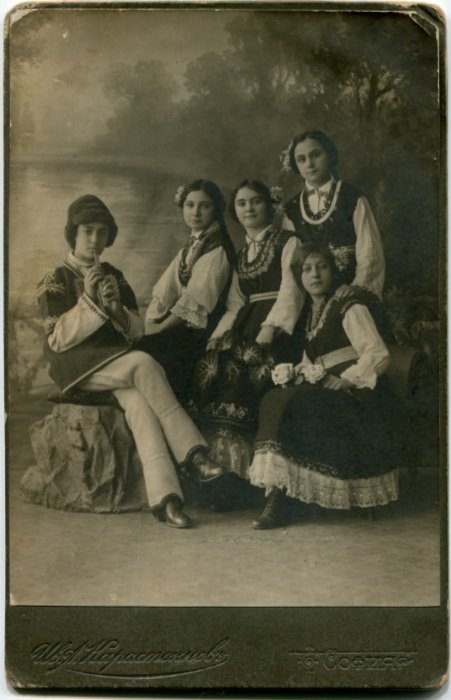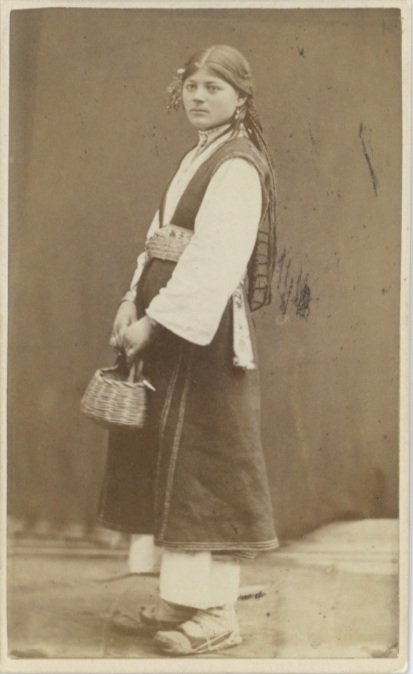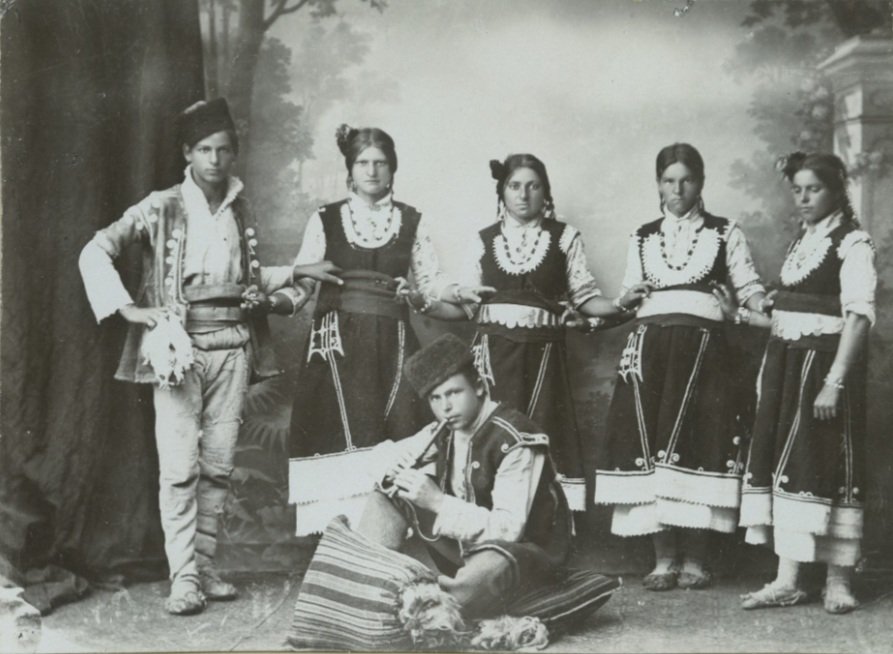Senior Thesis
Throughout history, clothing has been an instant indicator of the entirety of a person. Their gender, class, marital status, all things to telegraph what social role you are to expect of them. In my art I aim to interrogate the gender indicators present in traditional clothing and how the expectations placed on the garments affects the wearer’s self perception. Using a mixture of full garment recreations, flat watercolor elements and found objects to show playing with forms of self-expression.
In these pieces I wanted to show a diverse range of modes of self expression through dress. I hope to impart a joyous marriage between the expectations of the past with the subversion and extrapolation of the present. For this I focused on the folk clothing traditions of Northern Bulgaria where my family heritage traces. Using elements of typically male and female costume to synthesize a combination that is true to myself. To me there is immense power in connecting to personal history and tradition while allowing who you are as a present day person to shape it.
“The Bridegroom”
In traditional North Bulgarian weddings, there is a part of the ceremony translated as “Turning over the Bride” where the Bride’s father walks her out of the door of his house and she joins hands with her new husband. It generally represents how she is now part of her husbands family, and belongs to him. In this piece I aimed to combine the traditional outfit for a bride, with subtle elements from the grooms clothing. Many parts of the bridal wear represent the passive societal role of women, , covering her hair, layers of skirts limiting her movement, and the cumbersome veil headpiece restricting her vision and movements. Combined with the traditionally men’s shirt and waistband/ belt, the elements of the typically more mobile menswear represent holding gender deviation close to my heart. Outwardly conforming to the expected role, but with small elements of creative blending to express rebellion on a small scale, within the vocabulary of the costume style.

"The Bridegroom", main view

"The Bridegroom", portrait view

"The Bridegroom", alternate view

"The Bridegroom", alternate view without headress

"The Bridegroom", embroidery detail view

"The Bridegroom", costume rendering and ideation
“Exposed”
In Exposed I aimed to capture the internal feeling that the expectations of female modesty. The symbolism of the skeletal figure was used to impart the feeling of cold exposure to your body in the parts not covered by clothing. The pressures that society places on feminine people to be modest, stemming from Religious ideology, has invaded my brain like poison. The cold shock of shame from glaring disapproval makes me feel as though my bones and organs are on display, like a cadaver opened for an autopsy.
“Country Side”
I was inspired by pastoral representations of a romanticised, ideal life. Particularly two pieces of pastoralist art that hang in my family home, so I’ve grown accustomed to seeing them everyday. They depict a very traditional couple in stylized, Soviet era color block, collage. Personally an ideal rural life would include freedom in gender expression. Through taking the paper cut style of the originals and translating it into my own style of multiple layers of freestanding figures with fabric clothing. Connecting the figures freedom in expression to their freedom from the flat page.

"Country Side", main view

"Country Side", figure detail view

"Country Side", alternate view

"Country Side", dog detail view

"Country Side" ideation and construction planning

Original style inspiration for "Country Side"

Original style inspiration for "Country Side"
“Mismatched Couple”
Inspired by an exhibit of paper dolls with fabric clothing I saw at a museum, I wanted to play with mixing traditionally masculine and feminine elements on a small scale.
Research & Ideation
Images of my ideation sketches, and the research images that inspired it







Images from the “Visual Archive Southeastern Europe” https://gams.uni-graz.at/vase


















Images from the book “Bulgarian Folk Costumes” by Elena Bancheva















Images from the book “The Magic of Bulgarian Folk Costume” by Irina Vitlyanova














